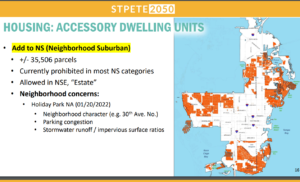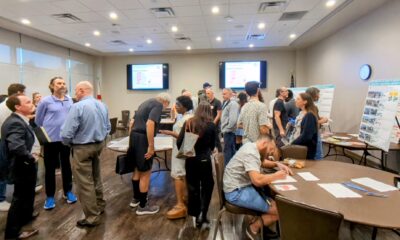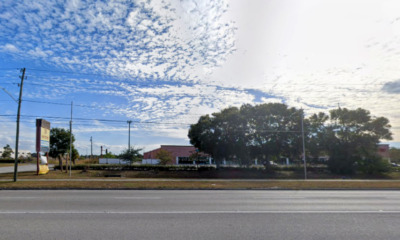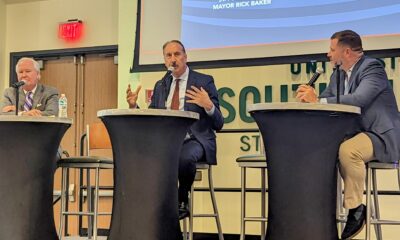Thrive
Council discusses accessory dwellings, zoning changes to increase housing

As the debate rages on how best to address the housing crisis in St. Petersburg, city officials continue to explore every avenue for relief with a sense of urgency.
During Thursday’s Committee of the Whole (COW) Meeting, members of the city council heard an expansive presentation on how increasing accessory dwelling units (ADU), changing zoning regulations and increasing density along major corridors could help the housing problem gripping the region. The presentation is part of the St. Pete 2050 Plan and encompasses information gleaned from an extensive series of stakeholder meetings that began in May 2021
Liz Abernethy, director of planning and development for the city, led the presentation for the committee. She said she had the pleasure of attending Tuesday’s St. Petersburg Development summit, and some of Mayor Ken Welch’s remarks on how the city will manage its explosive resonated with her.
“He talked about protecting and preserving our authenticity, and that really struck a note with me,” Abernethy said.
Abernethy said the city currently receives about 60 ADU permits per year, and outlined city code amendments that could increase that number. Those include removing the requirement for paved parking spaces and allowing gravel, deleting the 50% floor area restriction for two-story buildings, and allowing single-family ADUs in multifamily districts, which Abernethy called an oversight and contradictory.
Abernethy also proposed increasing the maximum unit size from 750 square feet to 800 square feet or 35% of the total floor area, excluding garages.
Abernethy explained that areas zoned as NT-3 (neighborhood traditional) do not allow new ADUs, although NT-3 areas are home to many existing ADUs. Many of these neighborhoods are on the far east and west sides of the city, and Abernethy said residents of Historic Old Northeast voiced concerns regarding additional ADUs. The reservations are due to potential parking congestion and increased stormwater intrusion.
“That is a neighborhood where there are many now that were there historically,” she said. “This ability to have a new accessory dwelling unit in that neighborhood that does have the alleys seems consistent with the character of that neighborhood.”
While just 3,495 NT-3 parcels would qualify for ADUs, that number jumps to 35,506 in areas zoned as neighborhood suburban (NS). NS neighborhoods comprise wide swaths of the north, south, and west sides of St. Pete. Holiday Park recently expressed the same concerns as Old Northeast, with the additional worry that ADUs would change the neighborhood’s character.

A graphic showing the number of parcels zoned as neighborhood suburban that could qualify for ADUs. Screengrab.
Abernethy said project leaders discussed establishing a minimum lot size for NS parcels with ADUs, and based on feedback, they would take an incremental approach to the amendments. Currently, the minimum lot size for ADUs is 5,800 square feet for NS-1 and 8,700 for NS-2. Abernethy said there are stricter design standards for NS parcels to maintain the suburban character, such as a minimum 10-foot setback and a maximum height of one story.
“For me, I think it’s no surprise to anyone that I want us to try and go as far as we can to increase our units,” said Councilmember Brandi Gabbard. “You’ll probably hear me say that a lot today.”
Gabbard said she understands the concerns regarding a one-story maximum. However, if second stories are allowed on NS homes, she asked why ADUs in those areas are limited to one-story dwellings.
Abernethy said that was a great question and thinks it is related to privacy concerns and neighbors not wanting two families living next door. She said she would continue to explore that option.
“It just seems to me like a bit of a conflict when we’re talking about people’s private property rights,” replied Gabbard. “If I tear down the existing structure … and I put up a two-story home, I just don’t see how that is different than I want to add an ADU in the back over the top of my garage, but I can’t do that because it’s a second-story.”
Councilmember Lisset Hanewicz proposed subsidizing the construction of ADUs – especially in community redevelopment areas (CRA) – if the city mandates the units as affordable.
Rob Gerdes, assistant city administrator, said the city has considered subsidizing ADUs and requiring affordability in the past. He said city administration accomplished the measure with Contemporary Housing Alternatives of Florida (CHAF) and noted the CHAF’s construction of three buildings in the South St. Petersburg CRA.
“It is something that we are pursuing,” said Gerdes. “Outside of that, everybody that I’ve talked to about limiting income – even with a subsidy – frankly, they were not interested.”
Councilmember Deborah Figgs-Sanders asked if creating Neighborhood Traditional Mixed Residential (NTM-1) zoning would affect lot sizes and ADUs. Abernethy explained that if the city expanded NTM-1 zoning, that would essentially replace the ADU regulations because it would allow multiple units.
Abernethy recommended moving forward with NTM along major corridors as stated in the city’s comprehensive plan. Figgs-Sanders said she is concerned with traffic and parking issues along the major thoroughfares and fears the city is trying to provide housing with no parking solutions. She said she is trying to put ADU and NTM proposals together to avoid unintended consequences.
“If we were to do the NTM – the four-unit allowance – everywhere in the city, we wouldn’t need ADU regulations anymore because they would just be allowed under the four-unit gap,” said Abernethy. “So, that kind of supersedes the ADU discussion.”
“But that is not something staff was recommending then or now.”
Councilmember Ed Montanari said he is willing to discuss expanding ADUs in districts with alleys but is not in favor of any other measures due to parking and other concerns. Councilmember Gina Driscoll said she would be willing to compromise on that aspect.
Driscoll said changes are needed to parking requirements as they prohibit many people from constructing ADUs. She said the space people use for parking takes away valuable space for housing. She also noted that neighborhood traditional zoning already requires two parking spaces.
“My point is they’ve already had to build two parking spaces,” said Driscoll. “To do a third, that just wipes out the possibility altogether, and if they’re checking all the other boxes, we should be allowing that.”
The committee approved several amendments to the city’s ADU regulations while disregarding several others in a split vote. There was a heavy debate on specific details and hesitation for the universal language in Gabbard’s motion to move the proposal forward.
Driscoll pointed out that St. Pete 2050 has conducted 23 meetings, and there are several more before the proposal goes before the full city council. The hope is that the matter goes before the city council in June.








Brim Stone
February 27, 2022at2:49 pm
Historically, families didn’t own four cars per household. One can barely drive through Old NE now because of all the cars parked on the streets. Imagine if those grew by 50%. Not so charming.
John Avery
February 25, 2022at4:17 pm
Historically, neighborhoods like the Old Northeast have long had garage apartments (often the original living quarters while the house was being built) or the main house had a veranda enclosed to create addition living units (and rental income!) So this “change” in zoning is in reality a restoration of one of the unique attributes of the charming Old Northeast. It should be embraced,not shunned